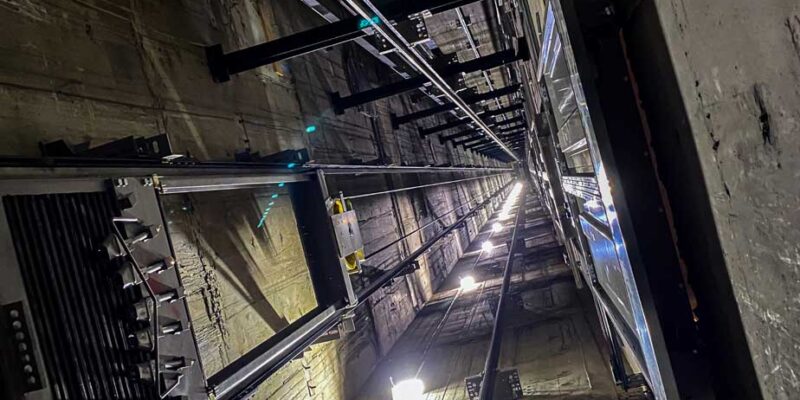Are you a business owner who wants to make sure your building is accessible and compliant, but you do not know where to start? It can be difficult to figure out what kind of elevator shaft construction is right for your property.
In addition, it can be even more challenging to find a contractor you trust.
This guide will help you learn everything about commercial elevator shaft construction. You will learn about the different types of elevators, the permitting process, and more.
Plus, we have included tips from industry experts so you can make the best decisions for your business.
Read on for more details:
The Importance of an Elevator Shaft
The elevator shaft can be one of the most important elements in a multi-level commercial building. An elevator shaft provides horizontal and vertical access to different levels of the building.
But it also requires special construction considerations to ensure safe and efficient operation.
Structural Design
The elevator shaft’s structural design is crucial as it must be strong enough to hold the elevator car, its passengers, and any additional weight that may be carried. It must also be able to withstand external forces like strong winds, earthquakes, or severe weather conditions.
The design should also include specific structural elements like seismic bracing to mitigate risks. Properly designed and constructed elevator shafts provide safe and reliable transportation between different levels of a building.
Building Materials
When it comes to elevator shaft construction, the materials used must be strong, durable, and able to withstand the weight of the elevator car, its passengers, and any additional weight that may be carried. Steel, concrete, and masonry are the most common materials used in the construction of elevator shafts because they have proven to be reliable and strong over time.
Steel is a strong and flexible material that can withstand seismic activity and high winds, making it a popular choice for elevator shaft construction. It can also result in a lighter yet stronger structure, which is ideal for high-rise buildings.
Concrete is a popular option for elevator shafts due to its strength, durability, and cost-effectiveness. It can withstand compression and tension, is fire-resistant, and prevents the spread of fire within a building.
Masonry is a traditional building material that is still used for elevator shafts today. It has high compressive strength, is a good thermal insulator, is fire-resistant, and has good sound insulation properties.
When it comes to elevator shaft construction, the materials used must meet strict safety and quality standards to ensure the safety and longevity of the structure. By using strong and durable materials such as steel, concrete, and masonry, elevator shafts can be constructed to provide safe and reliable transportation for building occupants for many years to come.
Fire Resistance
Ensuring fire resistance in elevator shafts is crucial for the safety of the building’s occupants. The elevator shaft must be designed to contain the spread of fire to prevent it from spreading to other parts of the building.
The shaft should be constructed using materials that are fire-resistant and can withstand high temperatures. Most elevator shafts need a 1-hour fire rating.
Steel frames and masonry walls are common materials used in elevator shaft construction for their fire-resistant properties.
In addition to using fire-resistant materials, elevator shafts must also be equipped with fire suppression systems, such as sprinklers, to quickly extinguish any fires that may occur. Smoke detectors and alarms should also be installed to quickly alert building occupants in the event of a fire.
Sound Control
Elevator shafts can generate significant noise, especially during the operation of the elevator car and its mechanical components such as the motor, pulleys, and cables. This can be particularly disruptive to occupants of adjacent rooms or floors, especially if the elevator shaft is located in the center of a building.
To mitigate noise levels, elevator shafts can be designed with sound-absorbing materials, such as acoustic insulation or sound baffles. These materials can be installed within the shaft’s walls, floors, and ceilings to help absorb noise and prevent it from spreading to other parts of the building.
Safety Considerations
Elevator shafts must be designed and constructed following elevator safety standards. This is to ensure the safety of building occupants.
This includes having proper lighting. But also emergency stop switches and elevator brakes that are in working order and reliable.
Elevator shaft planning and construction or working with the right elevator company is crucial. You can make better decisions about your commercial property’s accessibility and compliance.
Doing so will help keep your elevator running safely and efficiently for many years to come.
Pay Attention to Your Elevator Shaft Construction
Elevator shaft construction is an important factor to consider when making decisions about improving commercial properties. You must be aware of all the material and regulatory concerns associated with elevator shafts.
Taking such measures will make it easier for everyone to use your building, contributing to a higher level of accessibility that encourages equal opportunity and mobility. You should seek professional elevator construction services.
If you have further questions regarding elevator shaft construction or would like more information on this topic, please feel free to check out our blog!
